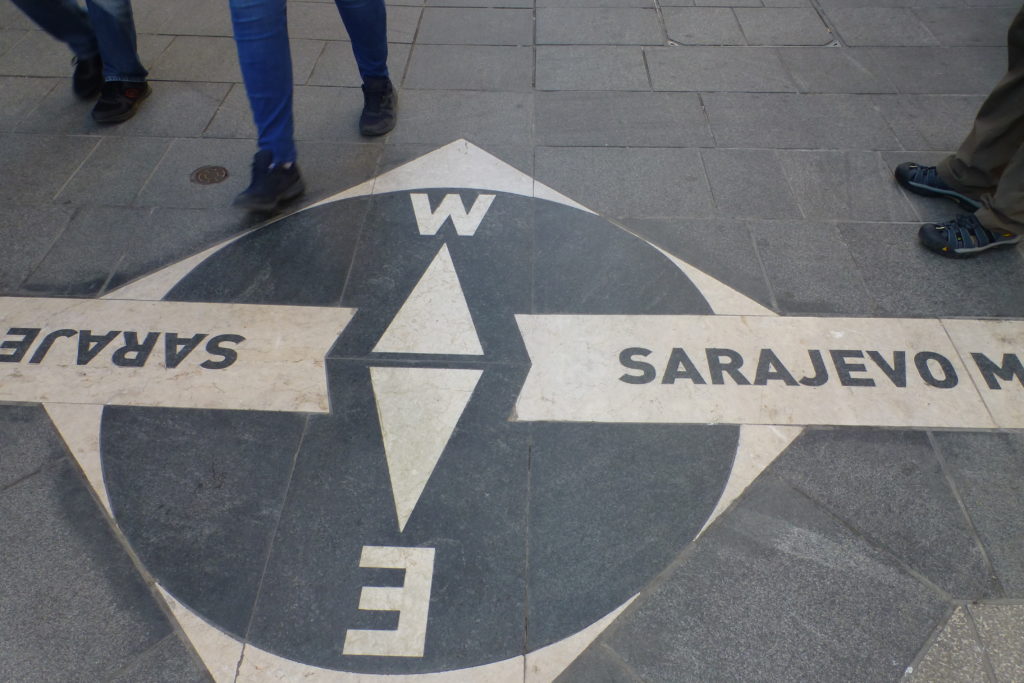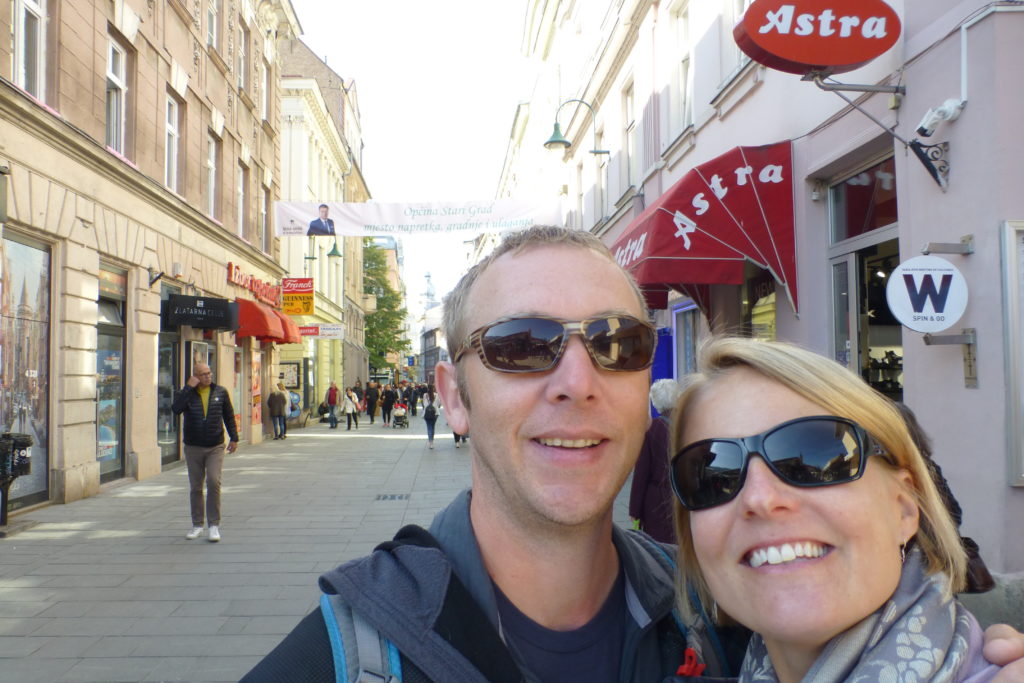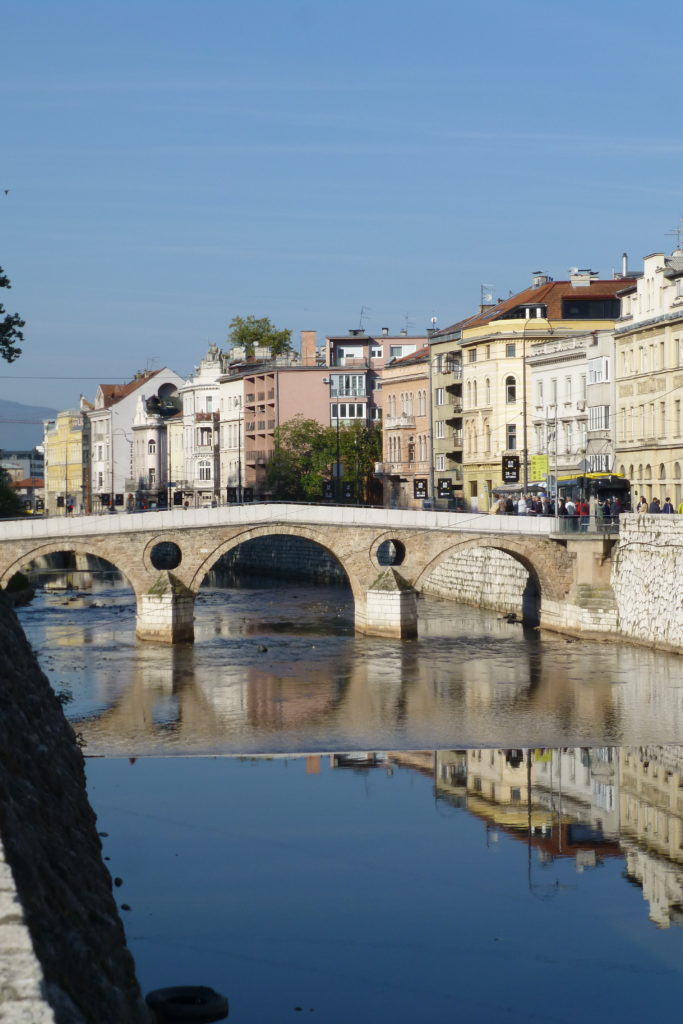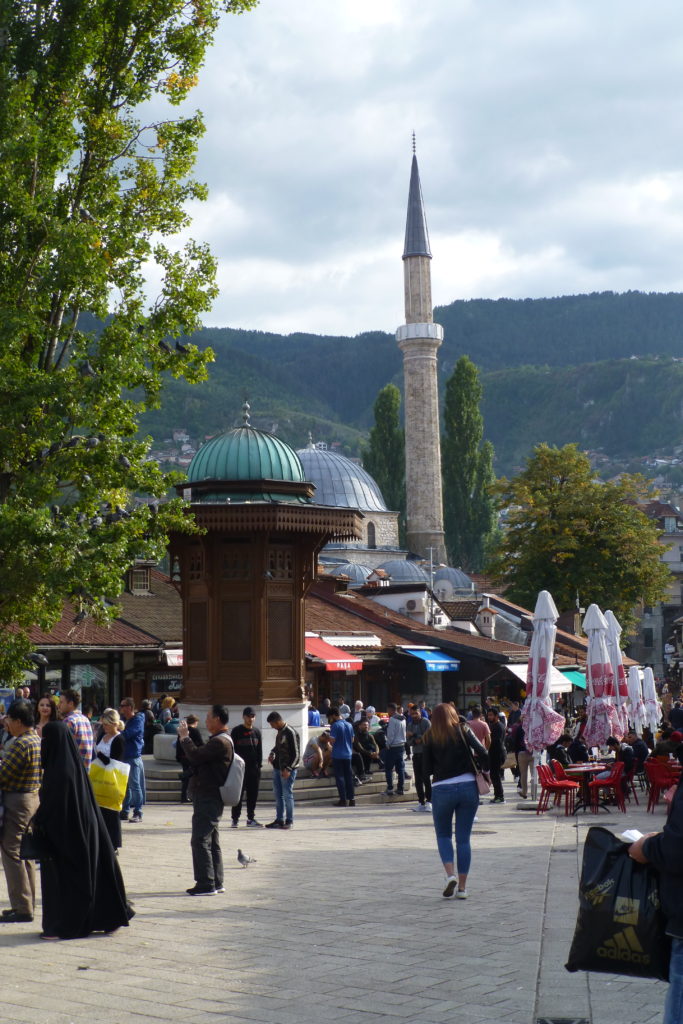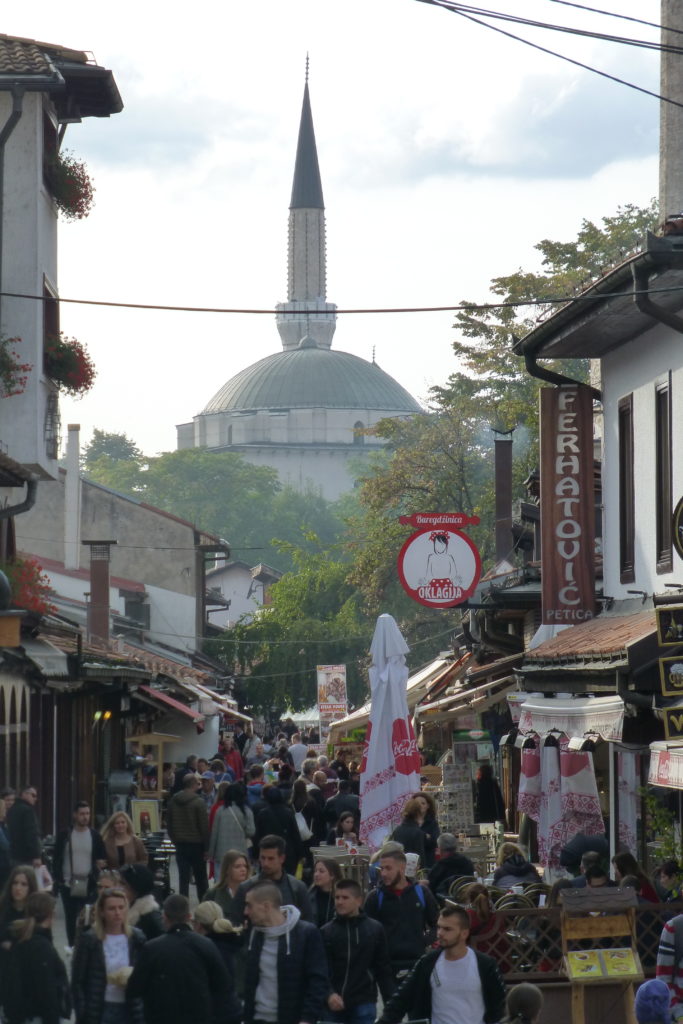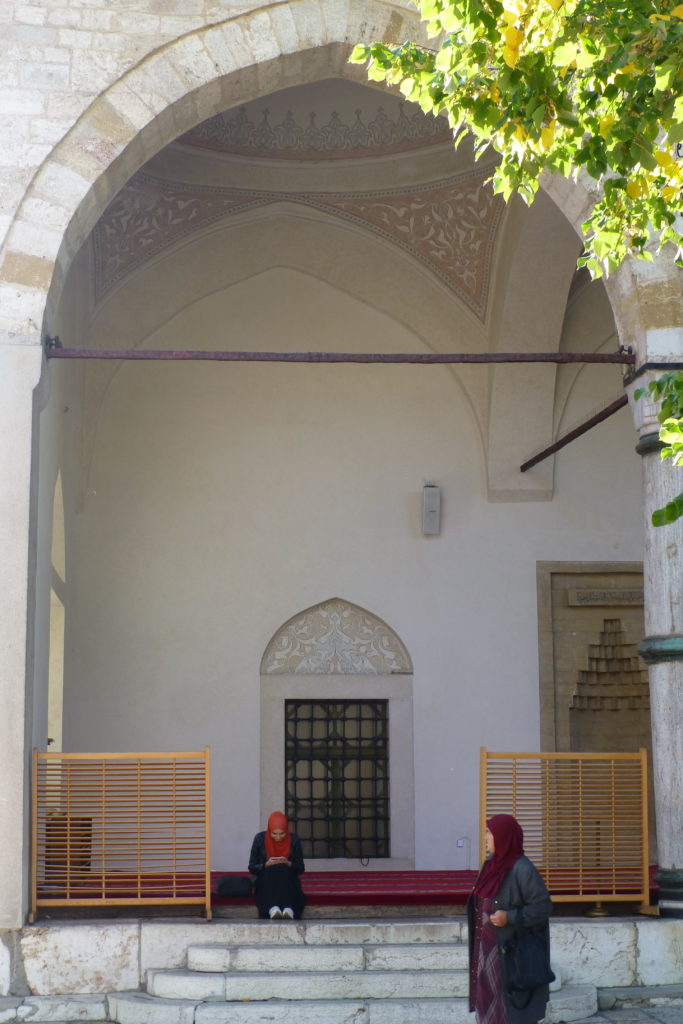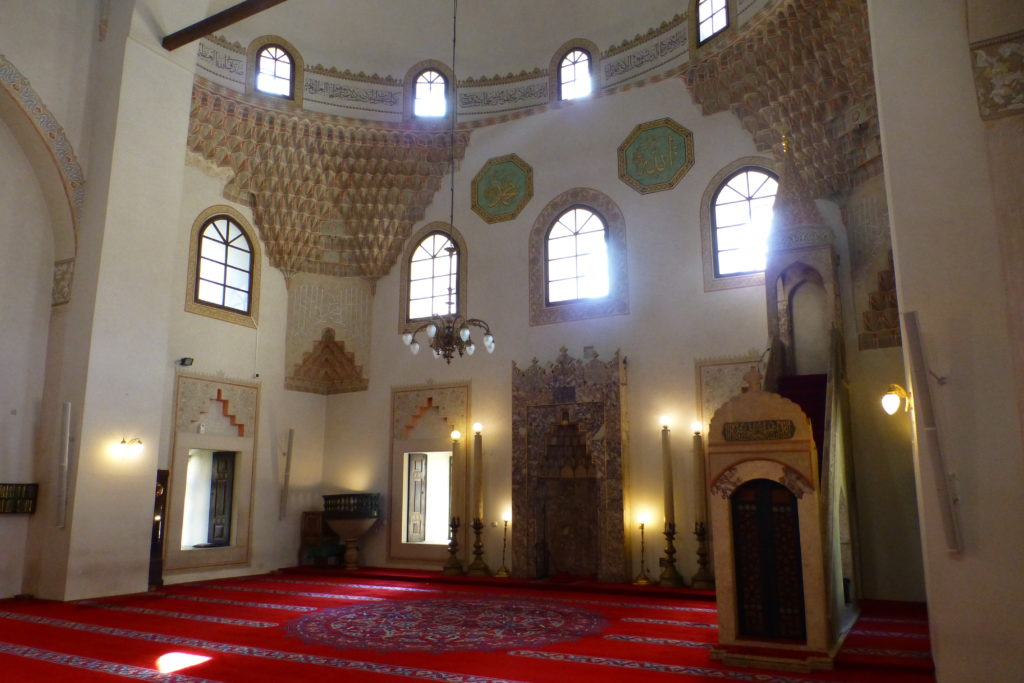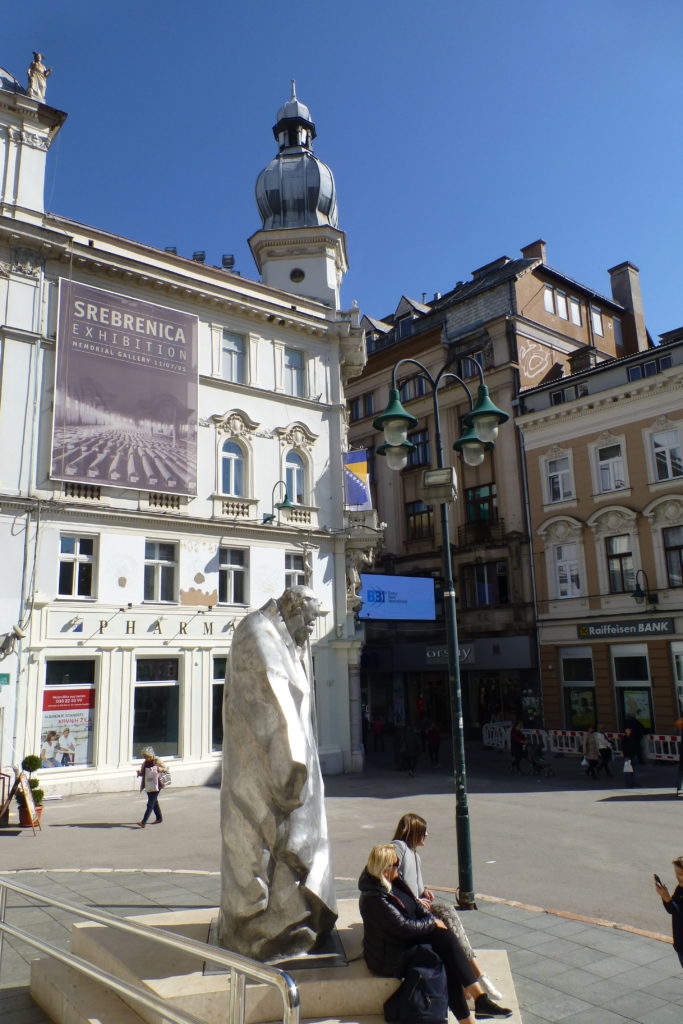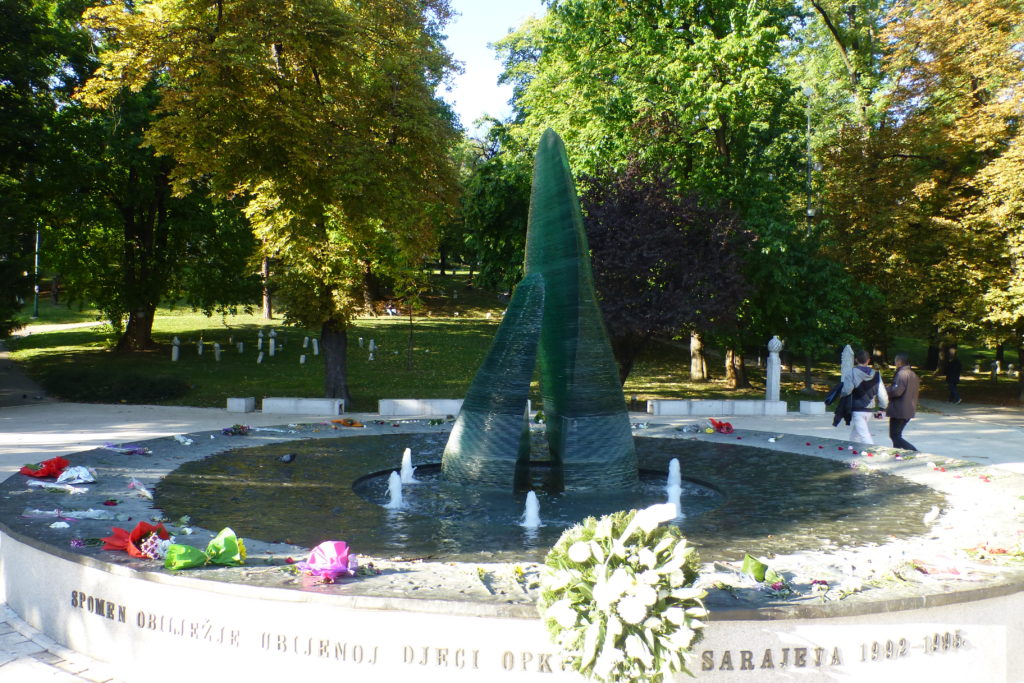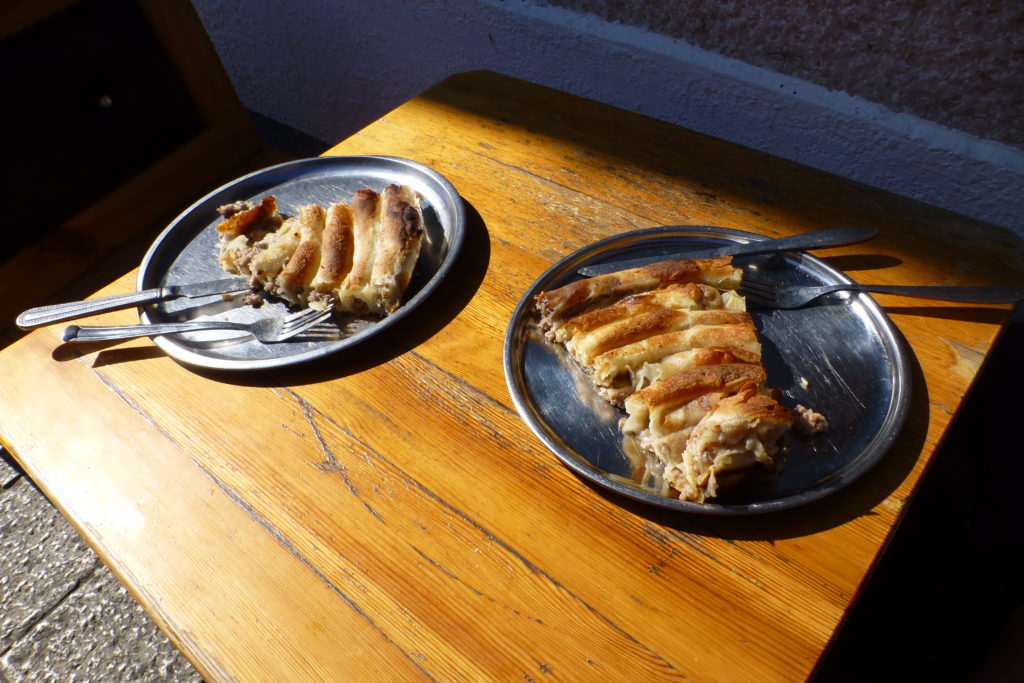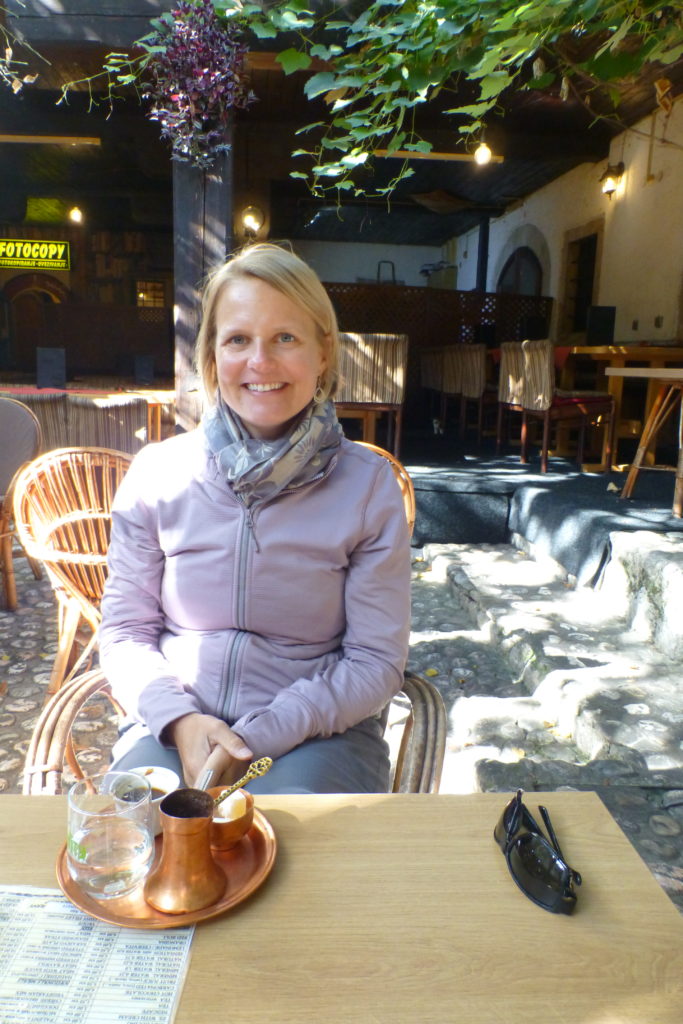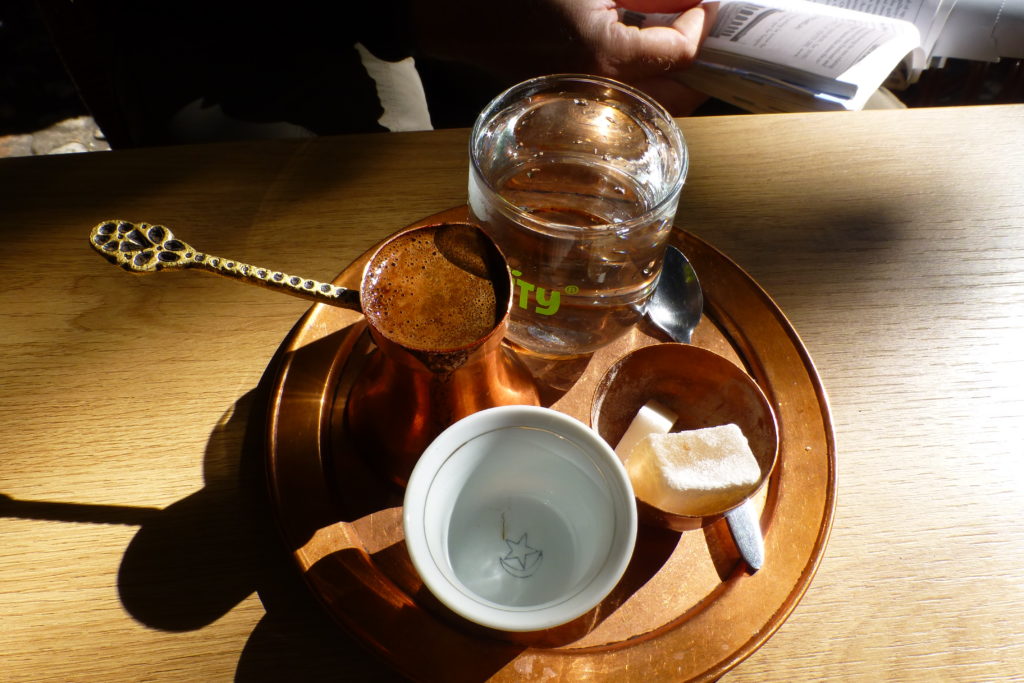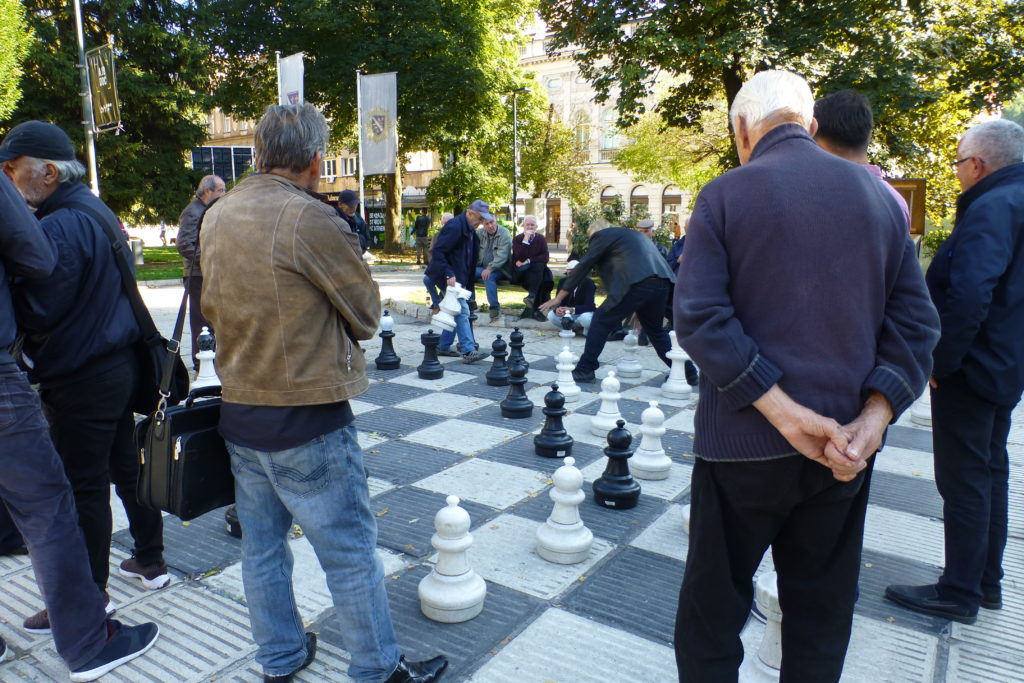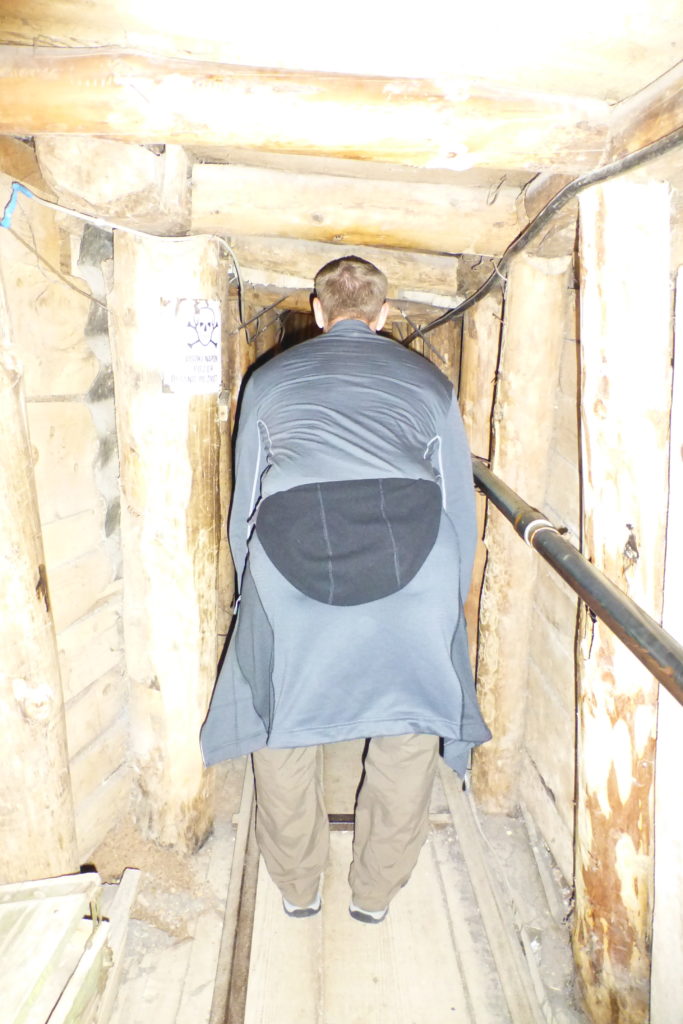Of all the names I heard when I was in middle and high school watching Channel One News each morning, only two have stuck with me: Sarajevo and Kosovo. I really didn’t understand where those places were, and I probably didn’t have much insight on the concept of a “siege†or “ethnic cleansing.†Today, we hear about these things in Syria, Africa, or Malaysia. We teach students about the Holocaust; hopefully, not as if it were an isolated event in the past so much as an opportunity to connect awareness with atrocities that continue to occur. I’m here to tell you that a week in Bosnia-Herzegovina will make it obvious that 30 years after the Yugoslav Wars, this region is still trying to recover. Sarajevo, if you are not familiar, was the site of the longest siege in modern history; for over 3 years, the Serbian army cut civilians off from the world, bombing the city mercilessly.
Before I describe anything else, I have to say that we learned just enough to be more confused about the war. It’s probably never a good idea to trust me as an expert on anything except for sarcasm, and I won’t pretend that I have anything but a basic understanding of the things I share with you here. Many of the pieces that started this war were put into place centuries ago when groups were relocated by larger empires or culturally important land (Kosovo) was transferred in redrawn borders. Around both World Wars, loose alliances kept relative peace, but different groups took opposing sides during each war. Croats, for example, sided with the Ustazi puppet government in WWII, persecuting Serbs to the point of genocide in hopes that the Nazis would reward them with independence after winning the war. Yugoslavian President for life Tito united the Slavs after WWII and kept them together for decades before old grudges and power struggles exploded again after his death as Yugoslavia dissolved. That’s a long way of saying, “It was really complicated, hate-filled, and pointless.†In order to really understand, I think we would have needed to go to Serbia as well (from what I’ve read, they truly viewed themselves as long suffering victims at the hands of other Slavs, and some of their grievances were legit), but our experience in Sarajevo was really the story of its civilians—of both infuriating suffering and incredible resilience—than the politics behind the war.
We crossed the border from Montenegro after travelling through some of the same amazing country that Sarah described in the last blog. While this is going to be a blog with a different tone, I can’t resist posting a picture of these awesome haystacks that we saw in both Montenegro and Bosnia. Our first hour in Bosnia was spent going through farmlands that could easily have been in any of the Balkan countries, although it was a change to see so many signs written in Cyrillic. Every broken house along the way makes you wonder if it was bombed during the war (in some cases, it is actually a sort of savings plan for people who distrust banks and build very slowly over the years with any excess money that they have; other times, it really was war damage).
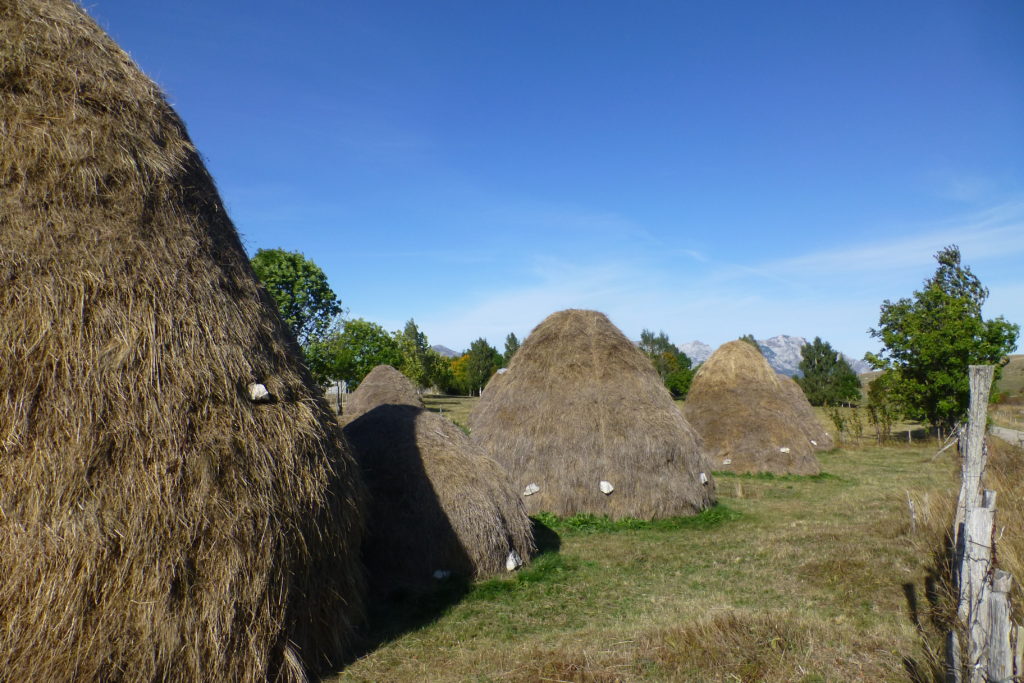
As we pulled into Sarajevo via what was known as Sniper Alley, however, there was no mistaking that we had arrived in a town that had been under siege for over three years. One of the first things you see is a large bombed-out student center that has never been rebuilt. High-rise, low-income apartment complexes still bear the pock marks of the daily shellings that rained on them; at the same time, new fancy government buildings and a ritzy shopping center have gone up in virtually the same area. The Holiday Hotel, originally the Holiday Inn, provides a reminder of Sarajevo’s proudest moment: the 1984 Olympics. The hotel was built to house guests for those games but served instead as a safe house for war journalists less than a decade later.
Not all of Sarajevo is the war hitting you in the face. In fact, touring the Old Town gives you a better sense of the diversity and respect that has often been a trademark of the people of this city (We visited houses of worship for four different religions). With both an Ottoman area that makes you feel as if you’re visiting Istanbul and a more modern Austro-Hungarian Habsburg Quarter only a couple of blocks away, it’s literally like East meets West at a single street corner.
Speaking of street corners, our hotel was just a few meters from a very infamous spot—the corner where Archduke Franz Ferdinand was assassinated, igniting the proverbial powder keg that started World War I. There was a very good small museum explaining the events of that day, as well as a history of the past century in Sarajevo. This blog will be long enough without going into detail here, but the occurrences of that day are pretty interesting if you like history—it was a series of mishaps with huge consequences. The gunman was an ethnic Serb who was treated as a hero; the Latin Bridge in the photo below was named after him until after the Yugoslav War.
The Ottoman side of Old Town is full of mosques, narrow lanes of copper shops (complete with artists pinging away with hammers), a small indoor bazaar, and fountains everywhere. It was a reminder of the way Ottoman cities were organized: mosque in the center, residential section away from trade sections—which were organized by craft—men running businesses, while women and children were limited to shaded courtyards. Those courtyards are now pizza places, hookah lounges, and Bosnian coffee (like Turkish coffee) cafes. Many Sarajevan Muslims dressed modernly, but we saw more hijabs and also heard the calls to prayer.
Both Sarah and I enjoyed Istanbul when we visited years ago, and it was fun to get a little refresher course in an easily approachable Muslim community. We visited the mosque when it was nearly empty, and so we had plenty of time to observe the pretty tile, calligraphy (in place of icons), and the pulpit-like staircase that leads to nowhere (it represents Allah’s need to climb higher to see the people as Islam grew). Outside the mosque is a giant fountain, in addition to a more modern facility, for ablution before prayer. Even here, though, the war is not far from the forefront of one’s mind—pictures of rebuilding the minaret are posted near the front of the courtyard; Serbian Chetniks—mostly Eastern Orthodox Catholics—used the minaret as a favorite target practice while under the orders to pummel Sarajevo to “the point of madness.â€
As I mentioned earlier, Sarajevo’s Old Town is like two cities in one; just like that, you find yourself whisked away from Istanbul and walking into Vienna. While the Ottomans did much to develop necessities like running water, the Habsburgs modernized much of the city. Suddenly, we were walking along a busy street full of modern, tall structures without minarets. If buildings had been restored since 1995, they featured Vienna-like facades. Modern cafes replaced Bosnian coffee nooks. Within several blocks, we visited a synagogue, Catholic church (which had a statue of John Paul II, who visited after the war), and an Eastern Orthodox church. Near all of these, however, we could see another symbol—the Sarajevo rose (artillery damage painted in red to create something more beautiful than destruction).
The most human face we had of the brutality that occurred in Bosnia was the Srebenica Exhibition. During the war, over 8,000 people (nearly all men over age 12—anyone who could conceivably father a child) were slaughtered and buried in mass graves. They had sought refuge from the UN-appointed Dutch soldiers, who were severely outnumbered and hamstrung by the UN policy to avoid retaliation under any circumstances. Either scared, angry, or maybe even racist (we saw some pretty horrible graffiti left by Dutch soldiers), they sent all but a small number of pregnant women and small children away—knowing that the Serbian general had announced on television that it was time for the Serbs to take their revenge on the citizens of Srebenica. Many men who had gone north in search of refuge were executed in mass fashion upon their return. Women were bused away, forcibly raped and impregnated by Serb soldiers, or just forced to watch their family torn apart. In short terms, this was genocide.
The museum is excellent, and that made it even more difficult to experience. Photos of known victims, mass funerals, and women waiting for human remains to be de-mined so that they could be claimed, were accompanied by haunting audio commentary in the photographer’s own words. Several videos also depicted the siege of Sarajevo. In one, a tourist waits 10 minutes (somewhat impatiently) for a souvenir photo to be developed in Rome; at the same time, a boy in Sarajevo leaves to fetch water, narrowly avoids a sniper attack, but returns to find his apartment bombed and his family dead. Another film consists of a slideshow with many of the photos from the exhibit flashing to ghostlike music from Requiem for a Dream. The half-hour documentary with real footage from the events of Srbenica and interviews with family members—sometimes lone survivors—left almost everyone in the theater in tears. I will tell you that neither Sarah nor I had any emotional energy left to continue our planned tour of the nearby Sniper Alley, and I couldn’t help but wonder: if we were done in only a few hours of second-hand experience, how in the world could anyone survive three years?
Sarajevo today is not simply a story of tragedy. More than anywhere we’d visited on this trip, we were among Bosnians in this city. Even the Ottoman quarter is full of local Muslims heading to worship or devouring cevapi (more on that later) or burek (the real kind that is cooked “under the potâ€) at the tables next to us. Both the traditional Bosnian coffee bars in the Ottoman quarter and the coffee shops lining the Austro-Hungarian quarter are full of locals taking a break or catching up with friends. Right when we needed levity the most, we encountered a large group of men cheering and jeering while two good-natured rivals played a game of life-sized chess in the park. While the scars of the war remain evident in the Sarajevo roses, grave markers in the parks, and disabled bodies, this city is alive.
One of our favorite memories was the first night; we were really tired, and the sky had been really dark and gloomy. We went out for cevapi, which are kind of like spicy hamburger meat formed into sausages and served in pita bread with grilled onions. Cevapi is basically the national fast food here—when McDonalds opened a few years ago, local restaurant owners protested and delayed it for months, but after it had been open for a couple of weeks, Bosnians went back to cevapi. Anyway, we got our food and started using our forks and knives when we heard, “Hey….hey…no†while the guy next to us good naturedly imitated our ways. He and his wife were with another couple, and they showed us that most people tear the pita and eat it with their hands while using their forks for the sausages. The guy then showed us a picture of him guarding Bill Clinton during the president’s visit after the war. Before we left, they insisted on taking a photo for us. This dinner made our night.
On our way out of Sarajevo, we visited the Tunnel of Hope, one of the coolest things we saw here. As the siege grew worse and people were running out of basic necessities in 1993 (year two), coal mining engineers dug the Tunnel of Hope over a half mile stretch under the airport in a period just under four months. Beginning and ending at private residences, this tunnel allowed a way out of town for people to resupply. Serbs knew about it, but couldn’t figure out exactly where to bomb, although they relentlessly bombed the houses around the airport. The UN had cut a deal to take control of the airport but had not yet intervened in the siege itself. Ironically, we had trouble finding it ourselves; a nice local guy on a motorcycle showed us the way!

We walked through a portion of the tunnel—at only five feet tall and about three feet wide, it hardly fit me even when I crouched. Men carried as much as 120 lbs. while women carried 60 lbs. over the half-mile in order to keep their families alive—a UN ration meant to last a family of four for 10 days would barely feed a hungry climber for one. While much of the recent history around Sarajevo reflects on the worst that humans can do to one another, the Tunnel of Hope offers the best.
I’m really glad that we made time for Sarajevo. It was difficult but also pushed us in ways that other places this summer had not. It’s no accident that many exhibits here mention the ’84 Olympics and the siege in the same sentence—a subtle message that the world was content to watch—rather than act—both times. Travelling is about trying to understand the ways of others, which also helps us understand ourselves. I just read a Basque proverb that said, “A land of strangers is a land of wolves.†I don’t want to live in a land of wolves.

